Seismic activity monitoring using fiber-optic cables
The National Seismic Network has started a new line of action focused on exploring the applicability of an innovative and relative new measurement method based on the DAS technology (Distributed Acoustic Sensing). The main aim is to apply this technique for earthquake monitoring and shallow subsurface analysis, as well as to explore other seismic applications of interest.
What is DAS?
DAS is a technique that allows continuous measurements of the strain along a fiber-optic cable produced, among other possible phenomena, by the seismic wave field. With this technology, optical fiber turns into an array of thousands seismic sensors that allow the detection and location of earthquakes. Unlike traditional seismic sensors, which can measure acceleration, velocity, or displacement, DAS system measures the strain rate along the optical fiber.
| Advantages | Disadvantages and limitations |
|---|---|
|
|
How does DAS work?
DAS interrogator is connected to one end of the cable and a laser pulse is sent it through the fiber. When travelling into the cable, a small part of the light pulse is sent back to DAS interrogator due to the reflections and scattering produced by random imperfections existing inside the core fiber. When the position of these heterogeneities change, a phase difference between the laser pulse and the backscattered pulse can be measured and cable elongations are calculated.
Thus, this technology converts the optical fiber in an array of thousands of seismic sensors by sending laser pulses through the cable and recording their reflections and scattering in the DAS interrogator. Currently, we can find different works about DAS measurements in specialized literature, and the number of investigated applications is increasing. In relation to seismology, some experiments show that both regional and teleseismic earthquakes can be successfully detected.
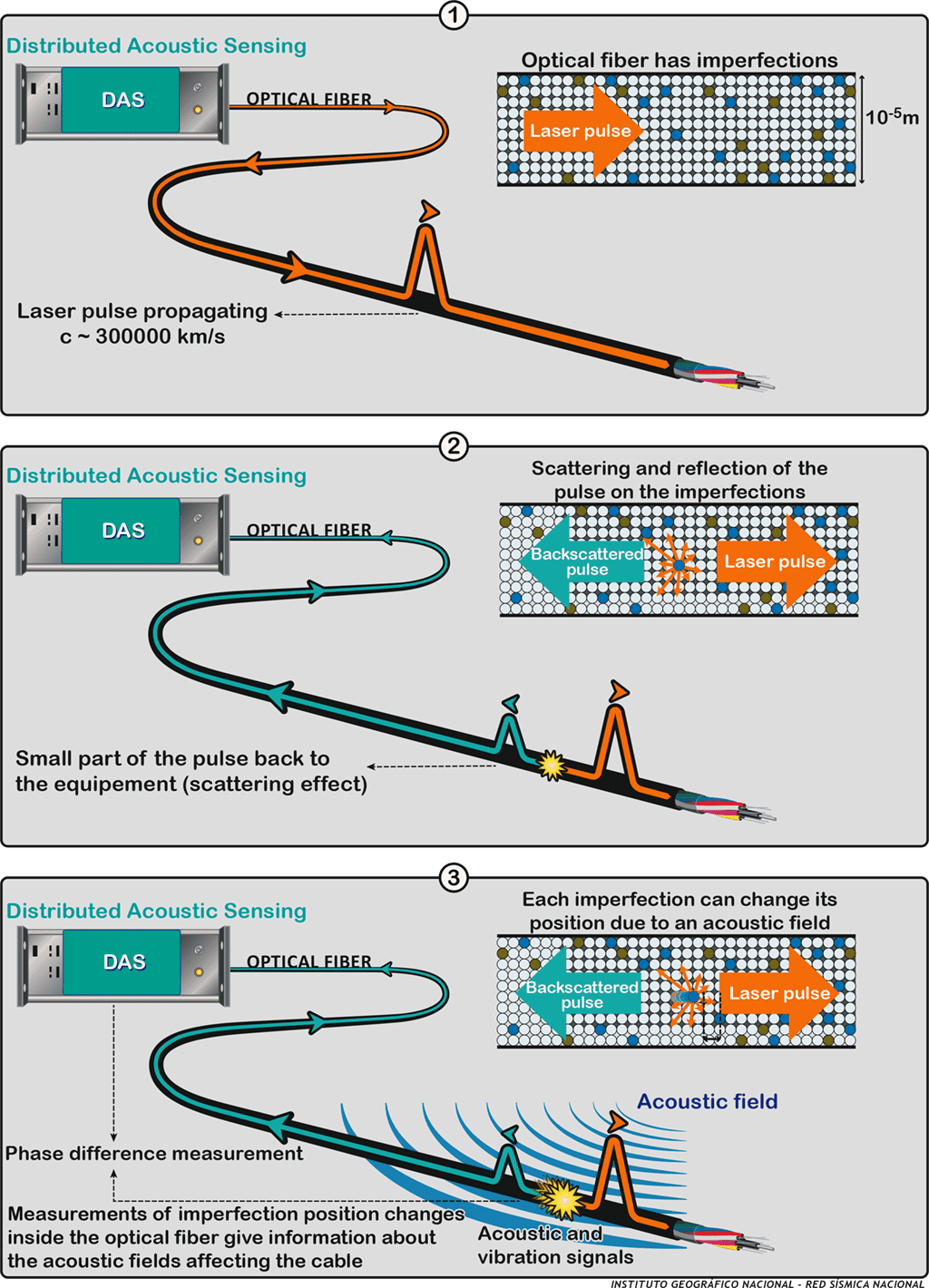
What are the acquisition parameters?
During the acquisition, the optical fiber is sampled in space and time. The different parameters must be adjusted for an efficient acquisition depending on the experiment characteristics. Some of the most important parameters are:
- Fiber distance to be interrogated.
- Optical power and pulse width to optimize the optical signal (the physical size of the pulse into the optical fiber).
- Interrogation pulse rate (number of pulses sent into the fiber per second).
- Spatial sampling resolution (distance between two consecutives samplings along the optical fiber).
- Gauge length (signal integration distance along the optical fiber).
- Derivation time (signal derivation time to compute the strain rate).
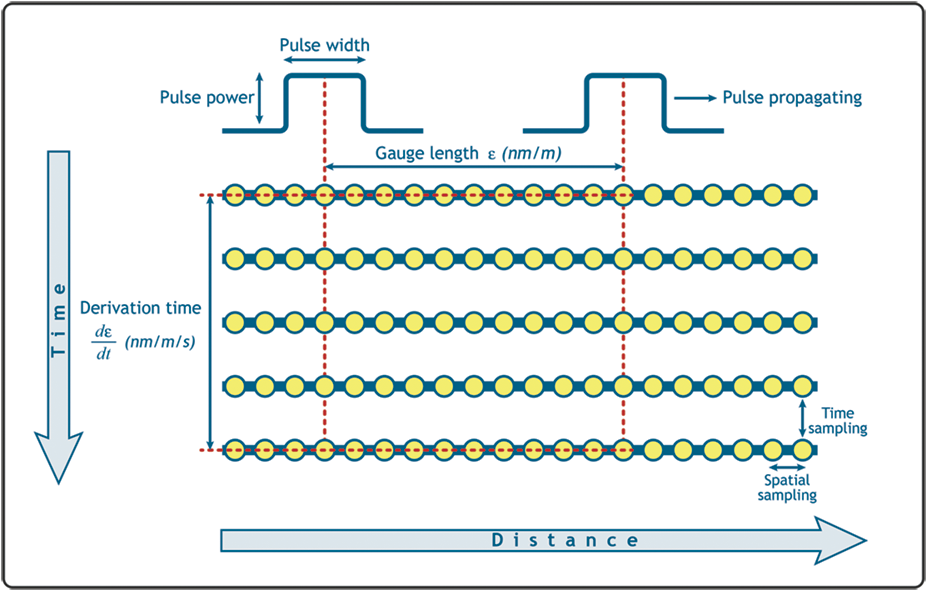
What possibilities does DAS offer in seismology? Applications.
Some examples of DAS applications in the field of geophysics and seismology are summarized below.
| Application | Place | Results | Reference |
|---|---|---|---|
| Earthquake detection and seismic monitoring (local earthquakes) | Toulon (France) |  | Sladen et al. (2019) |
| Earthquake detection and seismic monitoring (teleseism) | From West Sacramento to Woodland (California) |  | Ajo-Franklin et al. (2019) |
| Seismic Noise analysis | Richmond Field Station (Berkeley) |  | Ajo-Franklin et al. (2015) |
| Shallow surface structure | Sansiku coast (Japan) |  | Spica et al. (2021) |
| Urban subsurface monitoring | Stanford (California) |  | Fang et al. (2020) |
| Oil and gas and microseismicity monitoring | Canada |  | Webster et al. (2013), Karam et al. (2013) |
| Geothermal applications | Brady Hot Springs (Nevada) |  | Li and Zhan (2018) |
Experiments developed by the National Seismic Network
- DAS experiment using fiber-optic cable of a radio telescope in Granada
In a DAS experiment taken place in Granada, 20 km of cable from IRIS network have been interrogated. This cable connects the IRAM office (Instituto de Radioastronomía Milimétrica) in Granada with the radio telescope located in Sierra Nevada. A FEBUS interrogator that belongs to University of Michigan has been used in this experiment.
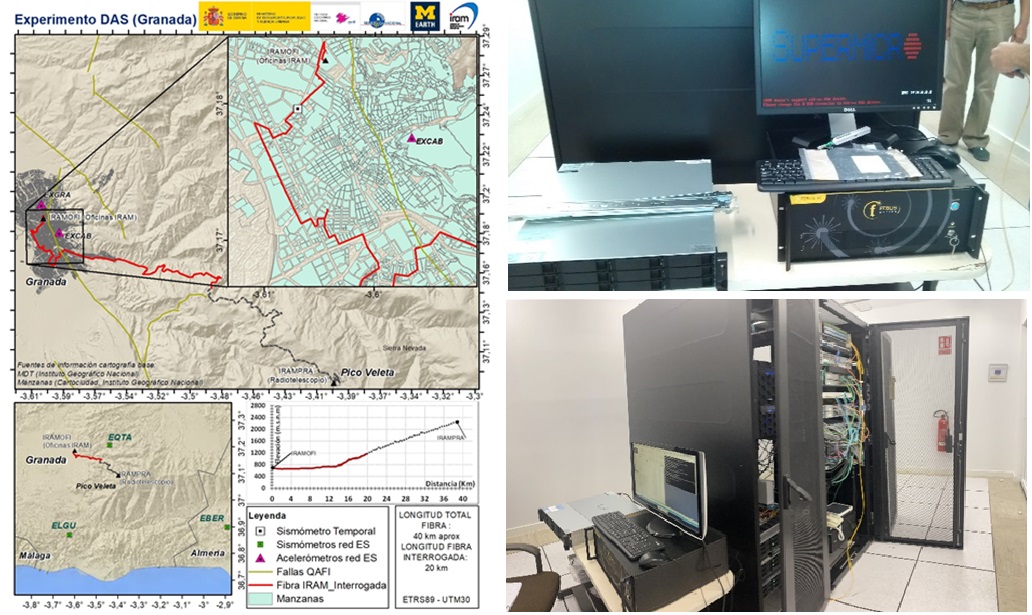
| Experiment | Initial date | Final Date | Interrogated distance(km) | Spatial resolution (m) | Sampling rate (Hz) | File size (1h measurement) (GB) | Interrogator |
|---|---|---|---|---|---|---|---|
| IRAM (Granada) | 2020-08-26 | 2020-08-27 | 20 | 5 | 2000 | 240 | FEBUS Optics A1-R |
- DAS experiment using a submarine cable in Valencia
In the Valencia DAS experiment, 50 km of a submarine telecommunication cable have been interrogated. This optical fiber belongs to ISLALINK Company and connects Valencia with Palma de Mallorca. A FEBUS Optics A1-R interrogator from the University of Michigan has been used.
In this case, the DAS system recorded some strains in the submarine cable produced by an earthquake. The event of magnitude 3.6 took place in the Cabo de Palos (Murcia), at a distance of 170 km away from the cable.
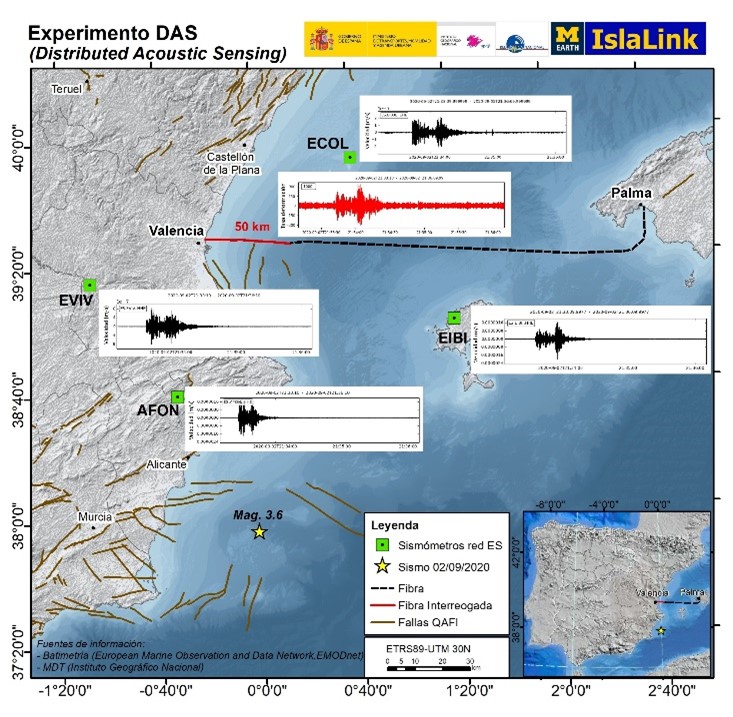
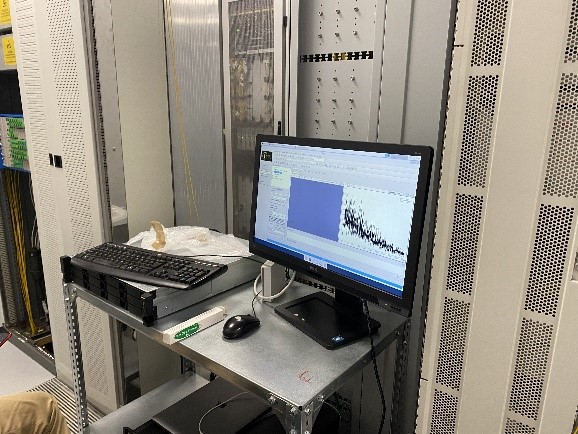
| Experiment | Initial date | Final Date | Interrogated distance(km) | Spatial resolution (m) | Sampling rate (Hz) | File size (1h measurement) (GB) | Interrogator |
|---|---|---|---|---|---|---|---|
| ISLALINK (Valencia) | 2020-09-01 | 2020-09-15 | 50 | 16.8 | 1000 | 40 | FEBUS Optics A1-R |
